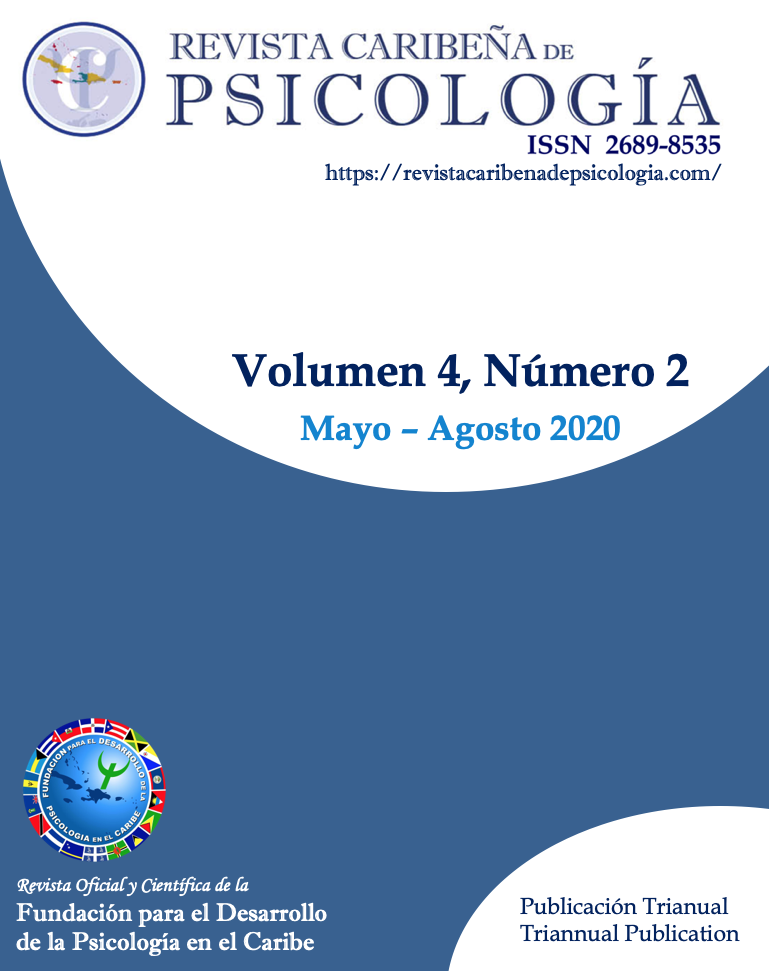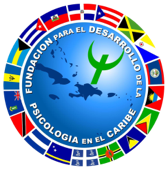Pandemias, COVID-19 y Salud Mental: ¿Qué Sabemos Actualmente?
DOI:
https://doi.org/10.37226/rcp.v4i2.4907Palabras clave:
pandemia, COVID-19, ansiedad, depresión, salud mental, aislamiento socialResumen
Las pandemias tienen la característica nefasta de crear un disloque masivo y generalizado en múltiples niveles, tanto personales como sociales. Las pandemias suelen relacionarse con confusión, temores, incertidumbre y la probabilidad de muertes en seres queridos. Asimismo, se relacionan con innumerables estresores sociales tales como hacer ajusten en las rutinas, separación de amigos y familiares, pérdida de empleos y aislamiento social. El surgimiento del COVID-19 hacia finales del 2019 ha traído consigo muchos de esos estresores, pero en una escala que no veíamos desde la pandemia del 1918, la cual se calcula que contaminó a casi una tercera parte de la humanidad. En este artículo se presentan datos recientes internacionales, que han examinado cómo el COVID-19 ha impactado la salud mental de innumerables personas. Se desprende de esta revisión que hay datos contundentes de que algunos trastornos psiquiátricos han aumentado notablemente, en especial la ansiedad, depresión, insomnio, y temores generales. Esto se ha encontrado en niños, adolescentes y adultos. La tasa de trastornos mentales es más alta aún en personas contagiadas y en los trabajadores de salud que se enfrentan día a día a tratar personas con COVID-19. Asimismo, se han identificado ciertos factores de riesgo, tales como tener puntuaciones altas en ansiedad rasgo, ser mujer, y haber estado cerca de personas contagiadas. Finalizamos haciendo un acercamiento conceptual y teórico hacia el tema y esbozando un resumen de cómo ayudar a minimizar el trastoque psicosocial de esta pandemia.
Citas
Artiga, S., Garfield, R., & Orgera, K. (2020). Communities of color at higher risk for health and economic challenges due to COVID-19. Kayser Family Foundation. https://www.kff.org/coronavirus-covid-19/issue-brief/communities-of-color-at-higher-risk-for-health-and-economic-challenges-due-to-covid-19/
Bao,Y., Sun, Y., Meng, S, Shi, J., & Lu, L. (2020). 2019-nCoV Epi-demic: Address Mental Health Care to Empower Society. Lancet, 395(10224), 37-38. https://doi.org/10.1016/s0140-6736(20)30309-3
Cevik, M., Bamford, C., & Ho, A. (2020). COVID-19 pandemic: A focused review for clinicians. Clinical Microbiology and In-fection, 20, 842-847. https://doi.org/10.1016/j.cmi.2020.04.023
Connol, K. (2020). Survey reveals gender gap in COVID 19 stress. Psychiatric News. https://doi.org/10.1176/appi.pn.2020.5b3
Crayne, M. (In press). The traumatic impact of job loss and job search in the aftermath of COVID-19. Psychological Trauma.
Cartwright, F., & Biddiss, M. (2004). Disease & history. Sutton.
Forbes, M., & Krueger, M. (2019). The great recession and mental health in the United States. Clinical Psychological Science, 7(5), 1-14. https://doi.org/10.1177/2167702619859337
Freeman, D., & Freeman, J. (2013). The stressed sex: Uncovering the truth about men, women, and mental health. Oxford University Press.
Gao, J., Zheng, P., Jia, Y., Mao, Y., Chen, S., Wang, Y., Fu, H., & Dai, J. (2020). Mental health problems and social media ex-posure during COVID-19 outbreak. PLoS ONE, 15(4), e0231924. https://doi.org/10.1371/journal.pone.0231924
Girolamo, G., Cerveri, G., Clerici, M., Monzani, E., Spinogatti, & Vita, A. (2000). Mental health in the coronavirus disease 2019 emergency-The Italian response. JAMA Psychiatry, E2-4. https://doi.org/10.1001/jamapsychiatry.2020.1276
Hooper, M., Nápoles, A. M., & Pérez, E. (2020). COVID-19 and racial/ethnic disparities. JAMA, 323(24), 2466-2467. https://doi.org/10.1001/jama.2020.8598
Hossain, M. M., Tasnim, S., Sultana, A., Faizah, F., Mazumder, H., Zou, L., McKyer, E. L., J., Ahmed, H. U., & Ma, P. 2020. Epi-demiology of mental health problems in COVID-19: A review. F1000Research, 9, 636. https://doi.org/10.12688/f1000research.24457.1
Huang, Y., & Zhao, N. (2020). Generalized anxiety disorder, de-pressive symptoms and sleep quality during COVID-19 out-break in China: A web based cross-sectional survey. Psychiatry Research, 288, 112954. https://doi.org/10.1016/j.psychres.2020.112954
Jiao, W., Wang, L., Liu, J., Fang, S., Jiao, F., Pettoello-Mantovani, M., & Somekh, E. (2020). Behavioral and emotional disorders in children during the COVID-19 epidemic. European Pediatric Association, 221, 264-266.e1. https://dx.doi.org/10.1016%2Fj.jpeds.2020.03.013
Jungmann, S. M., & Witthoft, M. (2020). Health anxiety, cyber-chondria, and coping in the current COVID-19 pandemic: Which factors are related to the coronavirus anxiety? Journal of Anxiety Disorders, 73, 102239. https://doi.org/10.1016/j.janxdis.2020.102239
Kohhar, R. (2020). Unemployment rose higher in three months of COVID-19 than it did in two years of the Great Recession. Fact-Tank. Pew Research Center.
Lai, M., Ma, S., Wang, Y., Cai, Z., Hu, J., Wei, N. Wu, J., Du, H., Chen, T., Li, R., Tan, H., Kang, S., Wang, Y., Yao, L., Huang, M., Wang, H., Wang, G, Liu, Z., & Hu, S. (2020). Factors asso-ciated with mental health outcomes among health care workers exposed to coronavirus disease 2019. JAMA Newtwork Open.3(3), e203976. https://doi.org/10.1001/jamanetworkopen.2020.3976
Moghanibashi, A. (2020). Assessing the anxiety level of Iranian general population during COVID-19 outbreak. Asian Journal of Psychiatry, 51, 102076. https://doi.org/10.1016/j.ajp.2020.102076
Molesky, M. (2015). This gulf of fire: The great Lisbon earthquake, or apocalypse in the age of science and reason. Vintage.
Nolen-Hoeksema, S. Larson, J., & Grayson, C. (1999). Explaining the gender differences in depressive symptoms. Journal of Per-sonality and Social Psychology, 77(5), 1061-1072.
NORC at the University of Chicago. (2020). Historic shift in Ameri-cans’ happiness amid pandemic. University of Chicago.
Ozdin, S., & Ozdin, S. (2020). Levels and predictors of anxiety, depression and health anxiety during COVID-19 pandemic in Turkish society: The importance of gender. International Journal of Social Psychiatry. https://doi.org/10.1177/0020764020927051
Piquero, A. R., Hawkins, D., & Kazemian, L. (2012). Criminal carrer patterns. En R. Loeber & D. P. Farrington (Eds). From juvenile delinquency to adult crime (pp. 14-46). Oxford University Press.
Qiu, J., Shen, B., Zhao, M., Wang, Z., Xie, B., & Xu, Y. (2020). A nationwide survey of psychological distress among Chinese people in the COVID-19 epidemic. General Psychiatry, 33(2), https://doi.org/10.1136/gpsych-2020-100213
Rossi, R., Socci, V., Pacitti, F., DiLorenzo, G., Marco, A., Sira-cusano, A., & Rossi, A. (2020). Mental health outcomes among frontline and second line health care workers during the Coronavirus disease 2019 pandemic in Italy. JAMA Net-work Open, 3(5), e2010185. https://dx.doi.org/10.1001%2Fjamanetworkopen.2020.10185
Roy, D., Tripathy, S., Kar, S., Sharma, V., Verma, S., & Kaushal, V. (2020). Study of knowledge, attitude, anxiety & perceived mental healthcare need in Indian population during COVID-19 pandemic. Asian Journal of Psychiatry, 51, 102083. https://dx.doi.org/10.1016%2Fj.ajp.2020.102083
Rumbold, B., & Dickson, V. (2012). Social determinants of health. En P. Liamputtong, R. Fanany & G. Verrinder (Eds.), Health, illness and well-being (pp. 177-196). Oxford University Press.
Seo, D., Ahluwaliab, A., Potenzaa, M. & Sinhaa, R. (2020). Gender differences in neural correlates of stress-induced anxiety. Journal Neuroscience Research, 95(1-2), 15-125. https://doi.org/10.1002/jnr.23926
Spinney, L. (2017). Pale raider: the Spanish flu of 1918 and how it changed the world. Public Affairs.
Tian, F., Li, H., Tian, S., Yang, J., Shao, J., & Tian, C. (2020). Psy-chological symptoms of ordinary Chinese citizens based on SCL-90 during level I emergency response to COVID-19. Psy-chiatry Research, 288, 112992. https://doi.org/10.1016/j.psychres.2020.112992
Tull, M., Edmonds, K., Scamaldo, K., Richmond, J., Rose, J., Gratz, K. (2020). Psychological outcomes associated with stay at home orders and the perceived impact of COVID-19 on daily life. Psychiatry Research, 289, 113098. https://doi.org/10.1016/j.psychres.2020.113098
Vindegaard, N., & Benros, M. (2020). COVID-19 pandemic and mental health consequences: Systemativ review of the cur-rent evidence. Brain, Behavior and Immunity. https://doi.org/10.1016/j.bbi.2020.05.048
Wan, W. (2020). The coronavirus pandemic is pushing America into a mental health crisis. The Washington Post, May 4, p. 12.
Wang, C., Pan, R., Wan, X., Tan, Y., Xu, L., Ho, C. S., & Ho, R. C. (2020). (2020). Immediate psychological responses and associ-ated factors during the initial stage of the 2019 coronavirus disease epidemic among the general population of China. In-ternational Journal of Environmental Research and Public Health, 17(5), 1729. https://doi.org/10.3390/ijerph17051729
Wu, Z., & McGoogan, J. (2020). Characteristics of and important lessons from the coronavirus disease 2019 outbreak in China. JAMA, 123(13), 1239-1242. https://doi.org/10.1001/jama.2020.2648
Yang, H., & Ma, J. (2020). How an epidemic outbreak impacts happiness: Factors that worsen (vs. protect) emotional well-being during the coronavirus pandemic. Psychiatry Re-search, 289, 113045. https://doi.org/10.1016/j.psychres.2020.113045
Zhou, S., Zhang, L., Wang, L. et al. Prevalence and socio-demographic correlates of psychological health problems in Chinese adolescents during the outbreak of COVID-19. Euro-pean Child Adolescent Psychiatry 29, 749–758. https://doi.org/10.1007/s00787-020-01541-4
Zhu, J., Sun, L., Zhang, L., Wang, H., Fan, A., Yang, B., Li, W., & Xiao, S. (2020). Prevalence and Influencing Factors of Anxiety and Depression Symptoms in the First-Line Medical Staff Fighting Against COVID-19 in Gansu. Frontiers in psychiatry, 11, 386. https://doi.org/10.3389/fpsyt.2020.00386
Descargas
Publicado
Cómo citar
Número
Sección
Licencia
Derechos de autor 2020 Alfonso Martínez-Taboas

Esta obra está bajo una licencia internacional Creative Commons Atribución 4.0.







